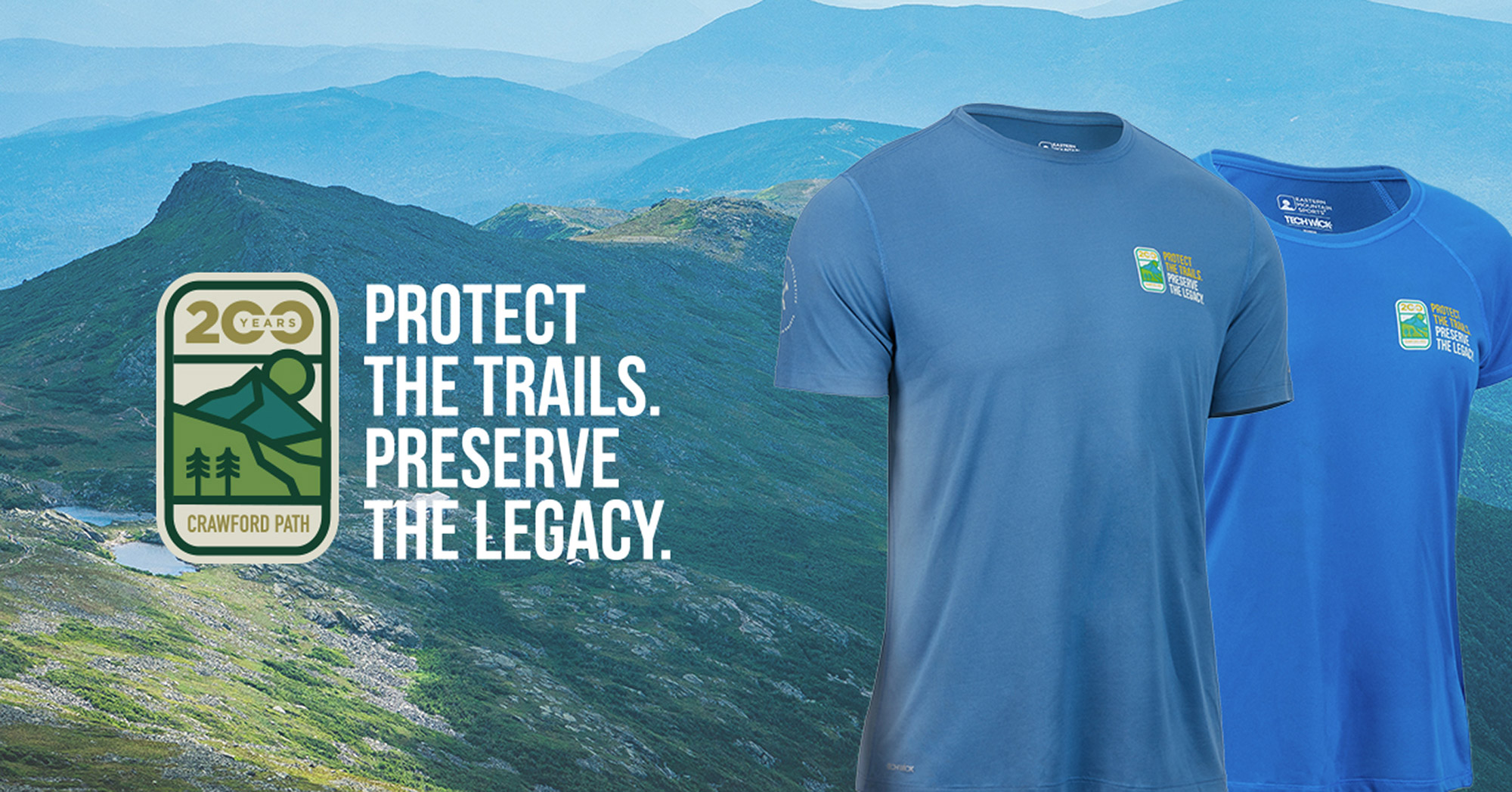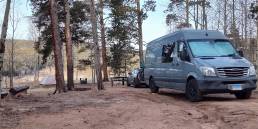The forested trail on the Crawford Path echoed with the shattering of rocks, lively conversation, and heavy breathing. The oldest continuously used hiking trail in the country was undergoing a long-needed facelift in preparation of turning 200 this year. Volunteers and professional crew members from organizations such as the Randolph Mountain Club, the National Forest Service and the Appalachian Mountain Club were working side-by-side clearing water bars, repairing rock steps and cleaning debris from the path. Cooperation like this is a common sight these days, but none of this would have been possible a few years ago.
They were gathered there by the White Mountain Trail Collective, a two-year-old nonprofit that coordinates resources, training and large scale projects in the White Mountains. The group has participation from 16 clubs and crews which traditionally haven’t worked together on larger or longer-term endeavors.
Coordination is important these days because the trails are experiencing historic levels of usage, without the concomitant upkeep to properly maintain them. There are over 1,400 miles of non-motorized trails in the White Mountains which are frequented by 6 million people each year.
A majority of the work falls on the shoulders of volunteer groups who maintain “their” regional areas. These self-organized and self-funded trail clubs have been in operation since before the the White Mountain National Forest existed, and established many of the paths used today. The regional clubs are having a hard time keeping up, and the National Forest Service doesn’t have the budget or capacity to cover all the work that needs to be done.
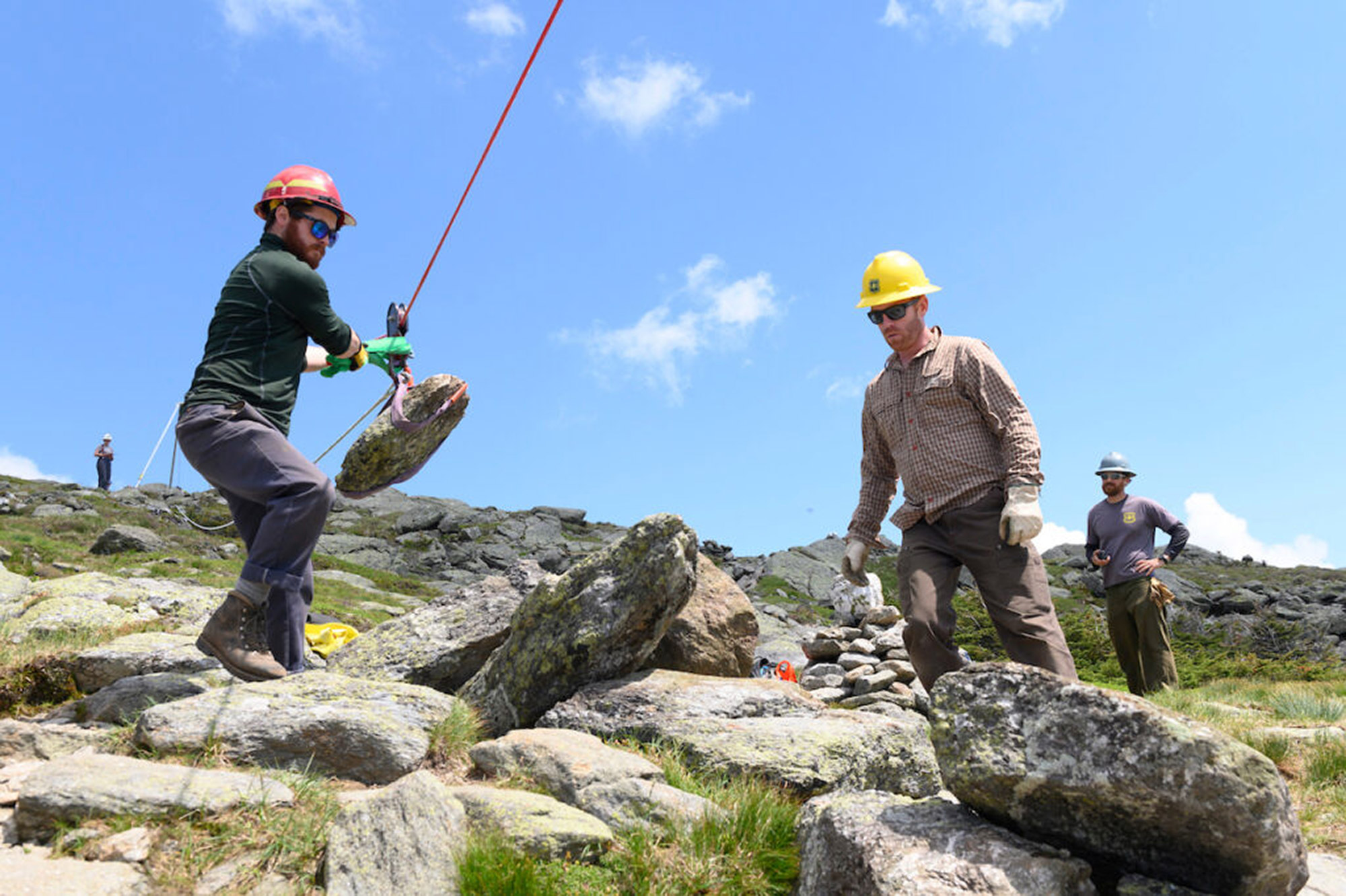
“Our own crew is getting smaller and older,” says Ken Smith, President of the Chocorua Mountain Club, one of these local groups. “We’re only able to complete Level 1 maintenance once per year but heavy use and huge rainfall can wash away a day’s work in a matter of minutes.”
Stewardship projects are broken into three levels: Level 1, like Smith mentions, consists of light maintenance like clearing brush, cutting back foliage, and digging out water bars (the rocky troughs you see in a path, which acts like a gutter to funnel water to the side of the trail). This generally doesn’t involve hard labor.
Level 2 is heavier work where actual repairs need to be made, like cleaning bogged ditches, or installing drainage. Level 3 are issues beyond repair. This is about re-building, such as pulling out dilapidated stair steps and building new ones. This involves quarrying rocks, splitting them, and moving them up and down the trail.
Level 2 and 3 projects are needed for long-term stewardship and are the least likely to get done because regional clubs don’t have the manpower or resources. These projects require a larger budget for materials, specialized tools, a dedicated crew for weeks or months (not days), and specific expertise to complete the work. Without a dedicated workforce, maintaining existing trail conditions is difficult, while improving the paths for the long-haul is nearly impossible. That’s where the WMTC decided to pool resources to help.
“Our goal is to think 5 to 10 to 20 years out about how trail maintenance is going to get done.”
The organizing capacity of the WMTC offers the first opportunity for long-term planning to take place in the White Mountains.
“Our goal is to think 5 to 10 to 20 years out about how trail maintenance is going to get done,” said Melanie Luce, the group’s executive director. The WMTC focuses on the large-scale challenges that need a long-term strategic plan, serving as the organizing force to build the plan and utilize smaller groups where they’re most useful. By uniting these groups around a single shared project, the WMTC allows them to divide and conquer.
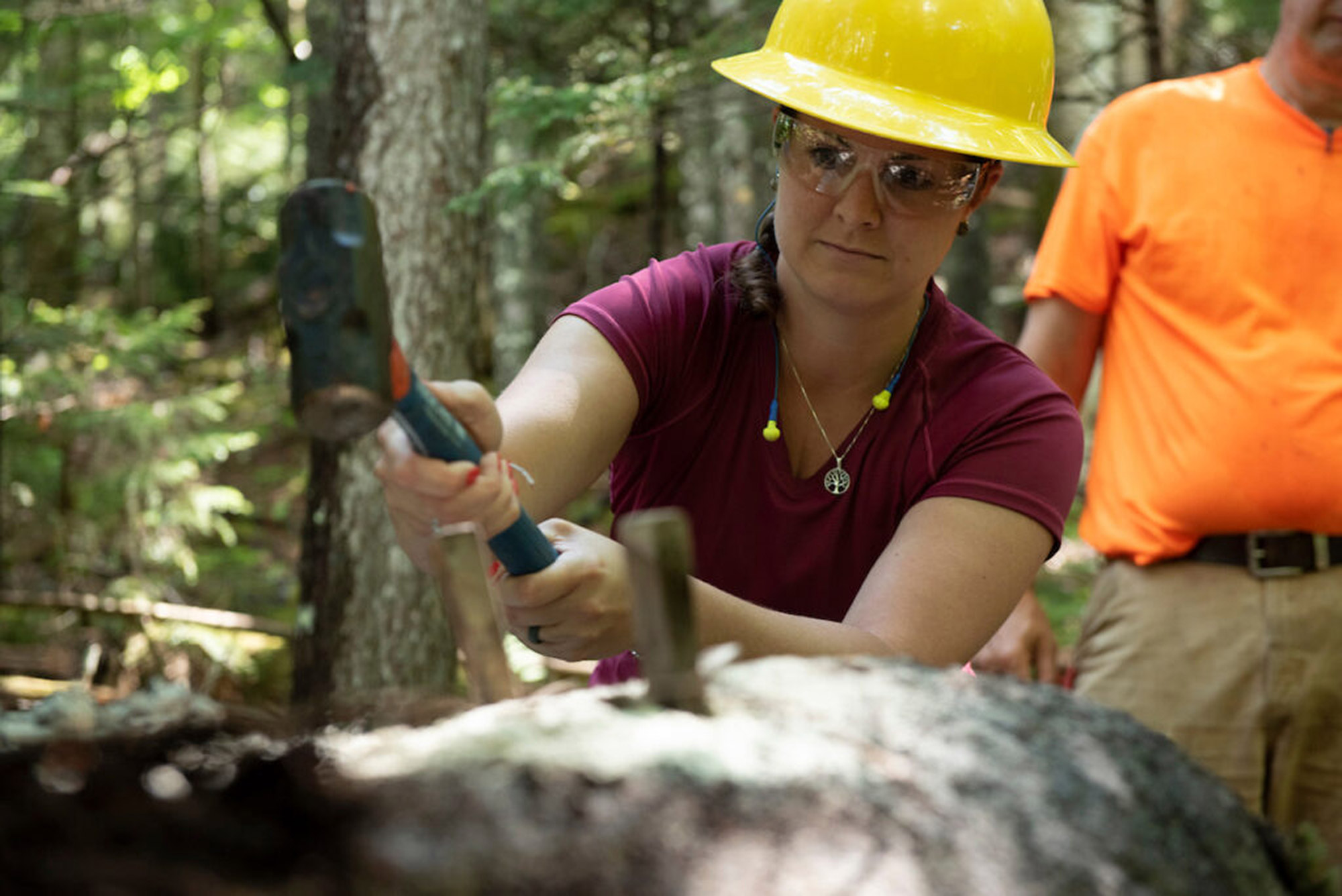
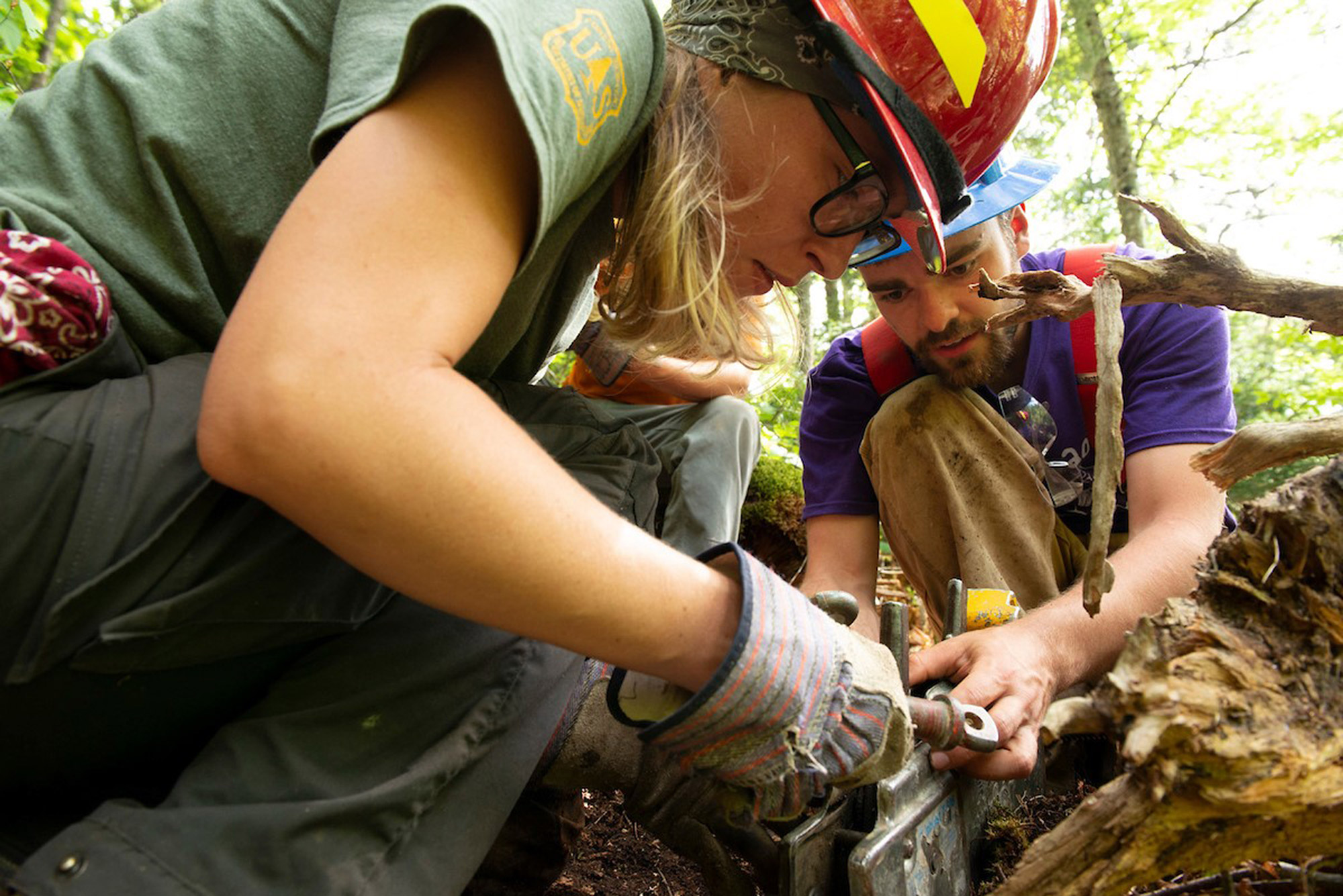
The WMTC also makes it easier for donations and fundraising to go directly towards trail maintenance. “Like most established trail maintaining clubs, our biggest challenge is always how to find funding for our pro crew each season,” said Bob Drescher, the Trails Co-chair of the Randolph Mountain Club. “Without grants, it would be nearly impossible. But instead of competing with other clubs for the same funding, the idea of combining our efforts [through the WMTC] to secure larger amounts seemed worth a try.”
As if that weren’t enough, the WMTS also puts together specialized trainings for local trail crews, such as stone work and alpine rigging, maintain a tool cache for participating organizations to use, and organize additional volunteers to bring even more hands to projects.
The Collective kicked off with a two year project on the Crawford Path in 2018, thanks in part to a grant, the help of the US Forest Service, and participation from many of the local trail clubs. The first project—now wrapping up its second year—was a success, and has grown to involve over 200 volunteers on the project. For 2020, the group plans to move into the Mount Washington Valley.
“Instead of competing with other clubs for the same funding, the idea of combining our efforts to secure larger amounts seemed worth a try.”
After each project is complete, on-going maintenance of the trails remains in the hands of the volunteer trail crews, often comprised of members who are aging out. To help develop the next generation of stewards, the WMTC partnered with Plymouth State University to help connect students to the local trails.
“With PSU this year, we helped start a conservation corp,” said Luce. “Students are being paid this summer, with funding that we raised, to learn how to do trail maintenance, so that they can come back next year to help do the work.”
This is a long-term commitment that needs leadership dedicated to the cause. Luckily, Luce is up for the challenge. “It’s not really a job for me. It’s a passion,” she says.
Thanks to the coordinated effort of the local trail crews, the Forest Service, and the WMTC, the trails of the White Mountains may very well celebrate centennials for years to come.
Aaron Gerry
Aaron Gerry is a freelance writer who spent the last year traveling and climbing through Eastern Europe. He’s a born-and-raised Massachusetts man who’s keen on trail running, hiking, and climbing. You can follow his travels at aarongerry.com.



